First of all, it is worth calculating the expected delivery date. The duration of pregnancy in cats is on average 60-63 days. Cat labor that begins a little earlier or later (from 55 to 70 days of pregnancy) is considered normal. Unfortunately, the purer and "more extreme" the breed, the more probable the pathological course of childbirth. If there have been cases of difficult births in a cat's family – it is worth doubling vigilance, or even arranging in advance with your doctor or veterinary clinic for a possible emergency operation. Unfortunately, abnormal pregnancies or labor complications can happen with even the most thoroughly mongrel cats (though much less often than with some breeds).
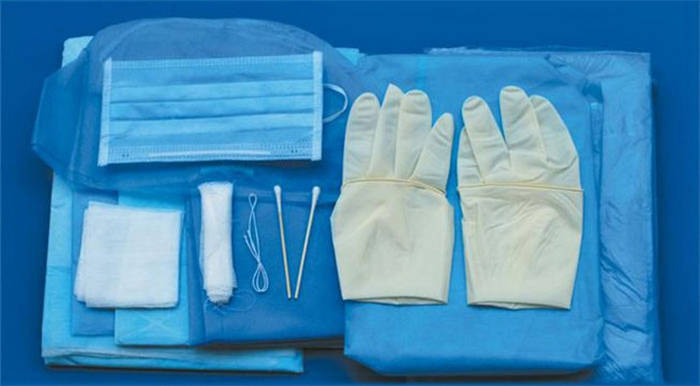
- How do you know when a cat is about to give birth? How to prepare for labor?
- Prepare the necessary things.
- The first signs of giving birth
- Can a cat have a false birth?
- Changes in the cat's behavior
- Signs that a cat is getting ready to give birth
- How do you know when the birth is coming?
- Signs of the beginning of labor in a cat
- Helping the owner when a cat is giving birth
- When you need help from your vet
- How to prepare your cat for labor
- 🐱How to know if a cat is about to give birth
- Pregnancy in a cat, important nuances
- Preparing for delivery
- Physiological signs
- Harbingers of an imminent birth
How do you know when a cat is about to give birth? How to prepare for labor?
A cat's belly becomes large by the end of the second month. The exception is when the litter is small, one or two kittens. Then the belly is small.
Before giving birth, a couple of days before, the kittens move very actively they are placed to come out of the birth canal.
A day or so before the cat's birth, you can notice the arrival of milk – the milk pouches have thickened. As soon as you feel the milk has come, then observe, the cat is about to give birth.
Just before the birth of a cat's plug – a greenish-brown fluid comes out. Cork is out – wait for contractions.
Prepare the necessary things.
- Disposable diapers or rags, old soft towels or sheets that can be laid, and not sorry to get dirty.
- Soft little rags or towels to wipe kittens with.
- Paper handkerchiefs to wipe their faces and noses.
- A baby rubber syringe to suck fluid from the spout and mouth.
- Blunt scissors. Blunt to squeeze the vessels in the umbilical cord and not to cut to avoid bleeding. If the cat does not chew the umbilical cord itself, we will help her.
- Iodine – to cauterize the umbilical cord after cutting it.
- Chlorhexidine – to disinfect hands, scissors.
- Warming pad – you will put kittens on it while the cat gives birth to others.
- Oxytocin for injection and a syringe. Oxytocin is injected 0.3-0.5 ml AFTER the birth, when you are sure that all kittens have been born. This is for uterine contractions and quick clearance. Especially if you are not sure that all the afterbirths are out.
- PHONE of a vetted vet who can make a house call. Or a carrier that you stick your cat in to take it to the clinic IF something goes wrong!
Note: During labor, watch closely and count the number of afterbirths. There should be exactly the same amount as the birth of the kittens.
Julia, the owner of the cattery, expert in cat education, author of "How to live with a cat" Whatsapp +79196096404
Subscribe to our channel CotoWatching ! Put up your leks and share the article!
The first signs of giving birth
The way a cat behaves before giving birth can be understood from her behavior. The earliest signs are that the cork in the animal is coming out. It is called plug in the figurative sense. It is a natural lubricant of a beige-pink color, which escapes from the genital opening. Thus the body clears the way of the exit of the fetus of the animal.
The surest sign is that the water is coming out. Therefore, the animal must be in a place prepared for calving, so as not to stain the sterile areas of the apartments. So that the cat or litter is not in danger, the place set aside for the cat's delivery should be fenced off. For example, you can take a spacious box and put disposable sheets inside.
The birth can be considered started when the vagina opens and the kittens gradually emerge. The last kittens (1-2) may be born with a delay. That is, you should not be in a hurry if it seems that the calving is already over.
Can a cat have a false birth?
Can a cat have false labor? Can and should be present for a facilitated real labor. False contractions start a few hours before the real labor. Contractions are uterine wall spasms in which the kittens roll over in preparation for calving. It is a completely normal phenomenon that prepares not only the animal, but also the owner. After false contractions, it is necessary to monitor the cat's behavior, activity should not be allowed, although the animal is unlikely to get up from its bed.
Possible complications are milk fever or eclampsia. It may not happen at the first birth, but at the second and subsequent births it can occur. But if it happened the first time, you should expect it to happen again in subsequent times. Does a cat always have false contractions? No, but in most cases they do occur. Not having a false labor can make the situation worse. During false labor and true calving, the owner can consult with the veterinarian by phone call. And to relieve himself of the heavy responsibility of giving birth, he can give the animal to a clinic to be delivered by professionals. False labor lasts an average of 1.5 hours, while real labor lasts up to 4-5 hours.
Changes in the cat's behavior
At the beginning of pregnancy, it is almost impossible to recognize the interesting position of the cat. The appetite changes: the animal begins to eat a little more or a little less. Also, the time of sleep of the animal increases. Experts note that cats are characterized by excessive caressing and reverent attitude toward the owner. They more readily allow themselves to be stroked. This is a manifestation of simultaneous motherhood and change of character.
A female cat may suddenly awaken her appetite and persistently ask her owner for food. And it is better not to make her nervous and hungry. During pregnancy, the belly grows and the animal begins to show increased attention to her hygiene by licking herself more often. Also, the behavior is characterized by caution and restlessness. If the cat has been walking outside, it will limit itself to such walks during pregnancy.
When approaching before giving birth, she begins to purr pityingly, licking the household, as if showing concern: from the owners and close guests to other animals in the house. This is a manifestation of the maternal instinct. A pregnant cat yelps when giving birth and when contractions come.
Synopsis. A new mother may purr and meow during labor. This occurs both for pain and as self-relaxation therapy. And the owner can help by petting and caressing the pet.
Signs that a cat is getting ready to give birth
If a cat has been living in your home for quite some time and it is not the first time it has been pregnant, then you probably know the signs that indicate that labor is about to begin. However, an inexperienced breeder may simply not pay attention to the symptoms of the approaching process, and then the event will come as a surprise to him. How do you know if a cat is getting ready to give birth?
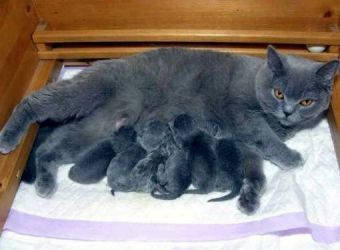
First of all, about two days before the birth the cat loses its appetite and milk begins to ooze from its nipples. At the same time, her nipples also increase in size, and now they stick out like goat's nipples. Just like in women, at least twenty-four hours before labor begins, the cat's abdomen "drops". The cat's uterus presses on its bladder, and so the cat goes to the bathroom more often. If you notice all these signs in your pet, do not let her out of the house in any case, so that she does not have to give birth in the street. Plan your affairs so that during the birth you or a member of the household will be with the cat.
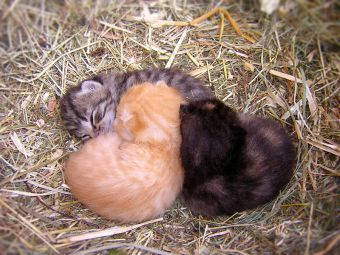
About 5-6 hours before the birth the cat's behavior changes. She begins to get nervous and rushes around the house looking for a secluded place where she can comfortably stay during the birth. If the owner has prepared a box with clean towels in advance for this process, the cat thoroughly tramples all the irregularities in it. The cat also carefully licks its genitals and turns upside down, showing that it wants its owner to scratch its belly.
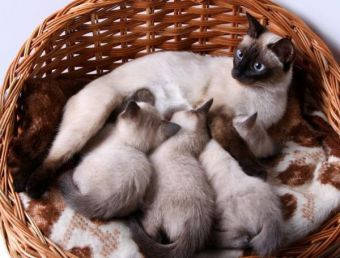
How do you know when the birth is coming?
How do you know when a cat is going to give birth? A few days before labor begins, you may notice distinctive signs of impending labor. You can tell that a pregnant female cat is about to give birth by the following signs:
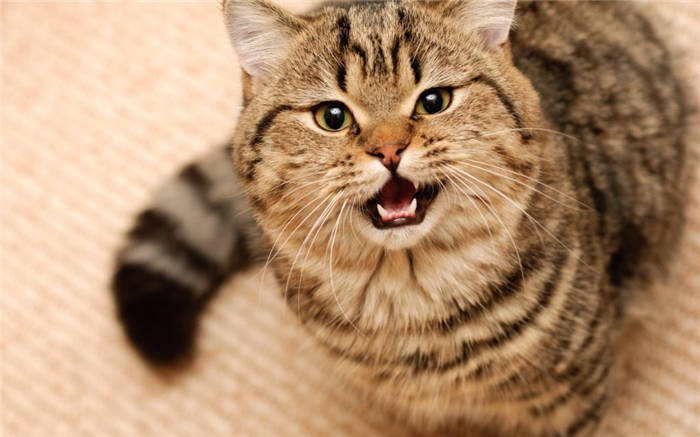
- The cat's behavior becomes restless. She runs around the apartment and meows loudly, crawls under the bed, behind cabinets in search of a hiding place. So she is looking for a suitable corner where she could climb for the time of delivery and hide the kittens.
- The cat begins to lick its genitals intensively. Cat owners may notice the mucus plug – a clump of pink or yellowish mucus, but as a rule, the animal manages to lick it off.
- A couple of days before delivery, the nipples swell up and become red. The skin around them peels. Milk may begin to be secreted.
- The cat archs its back, humping. These body movements indicate contractions, but so far only a training contractions. They are not as painful as real contractions, but the pet is still uncomfortable, frightened.
- Body temperature drops to 37°C. The female loses her appetite, refuses to eat, but drinks a lot.
- Cats that have a strong attachment to their owner will follow them on their heels. So they seek protection and help from humans, demand affection and attention, especially if they give birth for the first time.
Signs of the beginning of labor in a cat
The main symptom of when labor begins is contractions. Contractions are regular, involuntary contractions of the smooth muscles of the uterus, which the animal cannot control. They contribute to the opening of the cervix and the progress of the fetus through the birth canal. The first spasms are short, and the intervals between them are long. In a few hours they become more frequent and longer, and the intervals between them are shorter.
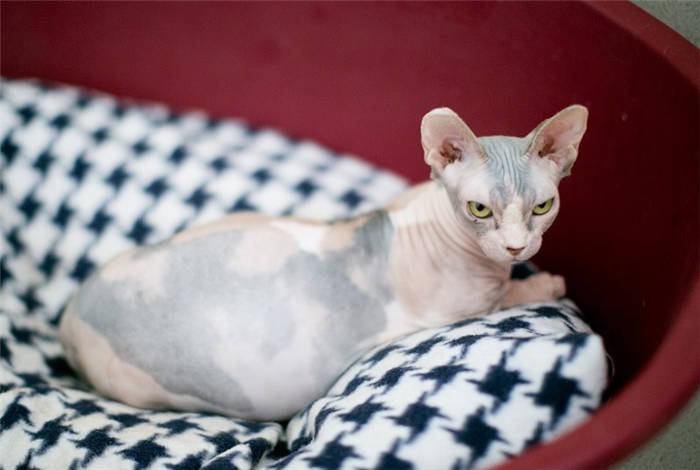
A few hours before contractions, the animal's abdomen changes shape. It becomes pear-shaped, descending lower to the genitals. The uterus presses on the bladder and rectum, which makes urination more frequent, and the cat is constantly running to the bathroom. Exhausted by contractions she may not run to the bathroom and urinate on the spot – you should not scold her for this.
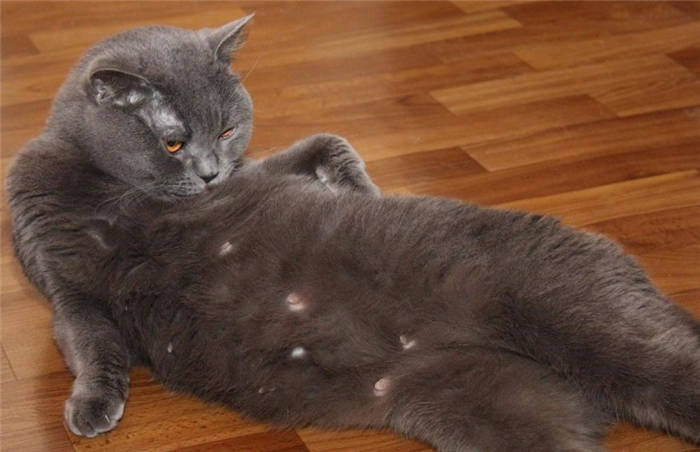
Shortly before the cat goes into labor her amniotic fluid will break. You can tell when the amniotic fluid is gone by clear or yellowish vaginal discharge, which the female tries to lick off quickly.
Helping the owner when a cat is giving birth
Be careful when vigorously helping a cat – if the cat doesn't quite trust you, or is too frightened, it may try to run away, for example. If there is no danger for life and health of cat and its babies it's better not to interfere.
But if the cat does not hurry to free the kitten from the amniotic bladder, your help is necessary, otherwise the kitten may suffocate. Take the kitten in a tissue, tear, or gently cut the amniotic bladder. Wipe the kitten thoroughly, suck the mucus and fluid from the nasal passages and mouth with a syringe. Normally, the kitten already makes attempts to breathe in after the air passages have been cleared, intensive rubbing promotes this. If you think your kitten is not breathing well, examine her tongue – a bright pink tongue should reassure you, a grayish-blue tongue indicates a dangerous lack of breathing.
If the kitten is not breathing, or breathes weakly – warm him in your hands, rubbing with dry gauze, check if there is any fluid or mucus in airways, blow gently into the nose, gently massage the chest, stimulating breathing. When breathing, the kitten usually squeaks softly – this is also a sign that the kitten is breathing.
If the mother cat has not chewed the umbilical cord, or if the rest of the umbilical cord is too long (which can cause injuries) – tie it tightly at a distance of about 2 cm from the kitten's tummy, and cut it with scissors. Treat the stump of the umbilical cord with antiseptic and dry it with a napkin. Cut the ends of the threads shorter so they do not pose a danger to the cat and kittens. It is preferable that the cat chews the umbilical cord – in this case the blood vessels are twisted and crushed and bleeding is reduced. If you observe bleeding from the umbilical cord (e.g. if the cat has bitten it too "carefully"), tie the stump in the above way. The remaining 2 cm of the umbilical cord will dry out and fall off in a few days.
When you need help from your vet
- The cat has begun strong contractions and pushing, but no results – the appearance of kittens – within an hour.
- You see a kitten in the birth canal but it can't be born for 10 minutes.
- The interval between the births of kittens is more than 3 hours (if it's been about an hour and the cat is very anxious, it's better to ask the vet for help right away instead of waiting any longer).
- Weakening or cessation of labor accompanied by strong anxiety, or conversely, apathy, lethargy, weakness.
- Abnormal vaginal discharge. A bright red discharge (small amount of blood may be normal, but if bleeding lasts more than 10 minutes, you need urgent veterinary care); purulent, foul smelling, etc. A small amount of lightly bleeding discharges can persist for the first 24 hours after labour (not clear blood!), this is normal; if they persist for longer an examination at the vets is also necessary.
- Increased or decreased temperature above/below normal.
(c) Zoostatus Veterinary Center for Treatment and Rehabilitation of Animals.
Varshavskoe shosse, 125 p. 1, tel. 8 (499) 372-27-37
How to prepare your cat for labor
Before giving birth your cat should be closely monitored. If there are any problems, you shall immediately contact the veterinarian. The veterinarian should be called to the house, because the giving birth should not be taken anywhere and not touched at all.
The caring owner will prepare a cardboard box with small holes in the sides, so that the cat with babies will be comfortably accommodated in it. It should contain a hot water bottle and clean old clothes or towels. The box should be placed in the quietest and warmest corner. It should be kept away from draughts and hot radiators.
It is necessary to consult a veterinarian in advance so that he can help the pet in time. According to his recommendations, you should prepare a first aid kit with medicines that may be needed. This first aid kit should always be at hand. It is desirable that it contains heart medications (camphor, cordiamine, caffeine), oxytocin, glucose, gamavit, vitamin C and calcium gluconate in ampoules.
Please note! Cat's milk substitute should also be on hand. It will come in handy if the cat refuses to feed the newborns.
- sterile gloves;
- Clean tissues or gauze;
- antiseptic;
- heating pad;
- pipette or syringe to remove mucus from kittens' mouths and noses;
- Vaseline oil;
- sterile floss or surgical scissors;
- scales to weigh the newborns;
- a notebook for notes and a pen.
The owner should change the diapers inside the house periodically during the birth. Old but clean clothes or special absorbent diapers can be used.
The owner can help the pet and clean the baby's nose and mouth of mucus with an eyedropper or syringe. This mucus can collect in the airways and clog them, and then the kitten will die. The birth bladder is punctured with scissors or a needle near the nose and mouth, otherwise the newborn will suffocate.
Important! If the birth is not successful and the cat cannot give birth, call the vet immediately. You should not pull a kitten stuck in the birth canal yourself. This should only be done by a competent, qualified veterinarian.
🐱How to know if a cat is about to give birth
Experienced breeders when breeding pedigreed cats usually know the exact date of mating, the gestational age of the cat. Therefore, it is not difficult for them to accurately determine that the cat is about to give birth.
But what to do if the owner did not plan the mating, or does not know when it took place?
This often happens when domestic non-sterilized cats are taken to the country house or given free range in the street.
There are a few basic signs you can tell when a cat's due date is approaching.
Normally, a domestic cat's pregnancy lasts about sixty-five days. That said, a cat can become pregnant as early as five months of age, but it certainly depends on its individual characteristics.
The first heat in cats usually begins at five to nine months of age. During the heat, the cat becomes more affectionate, actively meows, pats and rolls around on the floor. If mating occurs during the heat, the cat is likely to become pregnant.
The cat's appearance may not change during pregnancy. Some owners mistakenly think that she should have a big belly right away.
But in practice this is not entirely true, and pregnancy can be outwardly invisible almost until the birth.
It depends on the cat's breed, age and build. If the owner believes that the cat may not have become pregnant as planned, it is better to take her to the vet for a check-up.
But it is worth bearing in mind that the doctor will only be able to determine the presence of a pregnancy from the third week onward.
The most accurate signs of an impending birth in a cat are changes in her behavior.
Some owners may notice that the cat's food preferences have changed, or that its appetite has increased or decreased.
Nausea and rapid fatigue may occur. Some cats may have increased frequency of urination.
The cat may begin to hide in hiding places and choose a place to give birth.
The owner should be on the alert if the cat's mammary glands swell up or change their temperature; they may become hot when the birth is approaching.
Pregnancy in a cat, important nuances
Pregnancy in cats follows a certain cycle. According to generally accepted rules, cats of value are to be bred. If everything is done according to the rules, the mating is planned and registered in the breed club.
As practice shows, most inexperienced owners faced with the pregnancy of their wards after the fact, not looking after their wards during heat. The first sign of pregnancy can be considered the absence of heat, which should come by the cycle. Usually the cycle is 3-4 weeks. So, if your cat has not started meowing and calling the cat, it is worth analyzing if she might have had contact with the male during the last heat.
If your cat is not of breed value, to avoid pregnancy and the hassle associated with it, it is recommended that you spay your pet before the onset of heat. If you do it responsibly, you'll keep your cat healthy and not have to deal with the problem of "fostering" kittens.
According to a strange "tradition" it is believed that a cat carries and gives birth to kittens without complications. In fact, planning the pregnancy and taking care of the expectant mother is of enormous importance. Like all living creatures, cats are under a great deal of stress while carrying their young, and they need increased nutrition and care. After the birth of kittens, many, especially purebred cats, may suffer from complications.
Please note! In early pregnancy the owner has a choice – medical abortion or castration of the cat. In late pregnancy, the owner will have to accept and take responsibility for the life and health of the kittens.
Whether you wanted to have kittens or not, as soon as you find out that the cat is pregnant, she needs to be seen by the vet. Both parents are vaccinated and parasite-free before the scheduled mating. If preventive measures have not been taken before mating, some can be done in the first trimester. Some types of parasites can infect kittens in utero, leading to serious postpartum complications or death of the entire litter.
Preparing for delivery
One to two weeks before delivery, the cat will begin what is known as nesting. Usually with 7 weeks of pregnancy, the pet begins to look for a comfortable shelf in the closet or other shelter, which will become a nest. At this stage it is strictly forbidden to let the cat out for walks, because it can set up a nest outside the house.
Monitor the cat's behavior carefully and do not interfere unless absolutely necessary. If a cat decides build a nest in your closet, it is wise to give her a shelf instead of moving the nest to a place that is more comfortable for you. Nest preparations should be taken into consideration if only because the cat might give birth on your bed, your clothes, or a stack of clean laundry.
Important! In the process of giving birth and feeding the offspring, the cat must be protected from stress as much as possible.
You can avoid negative consequences if you prepare a nest for giving birth yourself. Special boxes are sold in stores, which are equipped as nests for women in labor. In fact, any sturdy cardboard box with high walls.
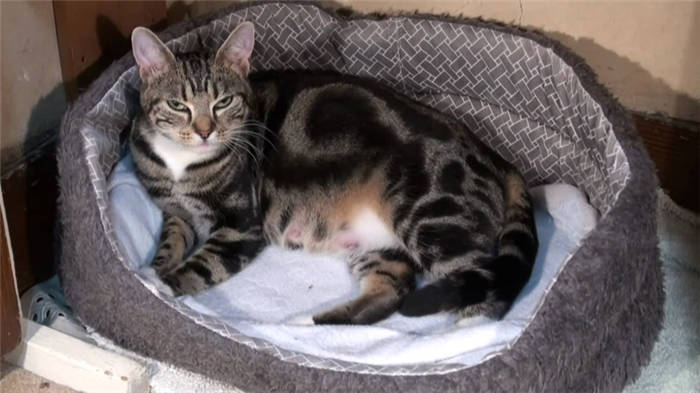
One wall is cut off, leaving a rim over which the cat can easily step. When preparing the nest, it is better to stock an additional box, because during the delivery of the cardboard can get wet and tear.
Important! Before making a nest box, check that it is not bound with sharp staples or glued with toxic substances.
Consider in advance how to cover the top of the box so that the cat feels secluded and at ease. A few days before labor and the onset of labor, most cats become withdrawn and try to hide. For an expectant mother who will give birth for the first time, it is better to equip several nests at once. Before she gives birth the pet will choose the best and safest (from her point of view) place.
Physiological signs
There are not many physiological signs of the beginning of labor, before the onset of strong contractions. The most telling sign is the cat's baseline body temperature. During pregnancy, the temperature may fluctuate throughout the day, but changes in readings do not exceed 1 degree.
A few days before delivery, the cat's body temperature stabilizes and will not change. The cat becomes less active, will sleep longer and eat more often. About a day before delivery, the cat's baseline body temperature begins to decrease. It usually drops to 37-37.1 degrees. If you record that the body temperature has decreased, measurements should be stopped. At this point, all you can do is calm the cat and wait calmly for the birth to occur.
Please note! The cat's body temperature is measured rectally, as any other way of measuring gives a great deal of inaccuracy. A few hours before labor the body temperature will stop dropping. From this point on, there is no need to measure the temperature.
In many cats, swollen and reddened nipples are seen as a physiological sign of pregnancy. The degree of change depends on the hormonal background. In most young cats whose pregnancies are normal, the first nipple swelling can be seen at 2 to 3 weeks of pregnancy. A few days before delivery, the mammary glands swell more, may become hot and richly pink.
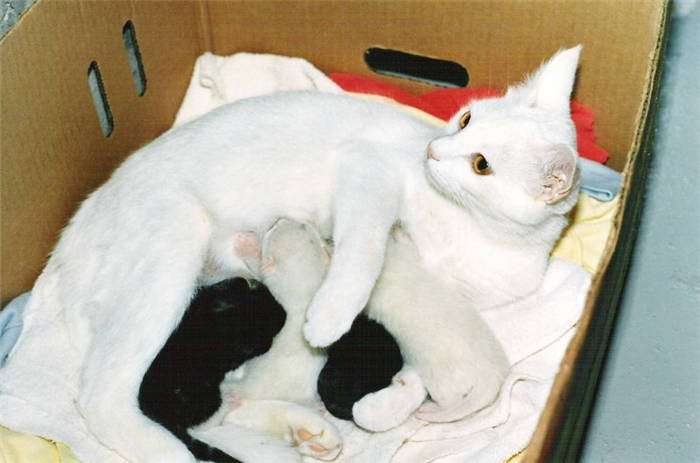
On the day of labor, usually a few hours before the onset of strong contractions, clear fluid begins to come out of the expectant mother's mammary glands. This way the body prepares for the production of colostrum. Cats with high hormonal levels may experience the onset of lactation even before labor begins.
If you notice one or more physiological signs of an impending labor, monitor the cat's condition carefully. The onset of labor is indicated by increased breathing and heartbeat. Many cats, especially those with flat and depressed noses, start breathing intensely with their mouths open. Make sure that the cat keeps its head above the bedding (not sticking its nose into the cloth). If possible, ventilate the room in which the nest is located.
Harbingers of an imminent birth
It is customary to divide a cat's labor into three stages. The onset of the first stage of labor is called the harbingers. Normally, a mucus plug comes out of the birth canal before labor begins. However, you should not rely on this sign for several reasons. The mucus plug may be very small and come out during urination. This process will be unnoticeable not only for you, but also for the mother-to-be. Moreover, many experienced owners tell us that they observed the rejection of the mucus plug a few weeks before labor.
The first contractions occur up to 30-40 minutes apart. There is little pain, so the cat may behave as usual except for being more anxious. As the contractions intensify, the mother-to-be will ignore food and stay close to the nest. More often than not during the first stage of labor the cat is active, you might say eager to drink water. You may notice that the cat goes to the litter box frequently, but does not empty her bladder or bowels. This behavior is due to a pulling pain in the peritoneum that feels a little like urges to urinate and defecate.
The movement of the first kitten toward the birth canal can provoke urges to defecate. Most cats go to the litter box to relieve their need. If you notice that the cat has already started contractions and goes to the litter box, be careful that no fetal bladder appears in the birth canal during defecation. If this happens, gently take the cat in your arms and carry her to the nest.
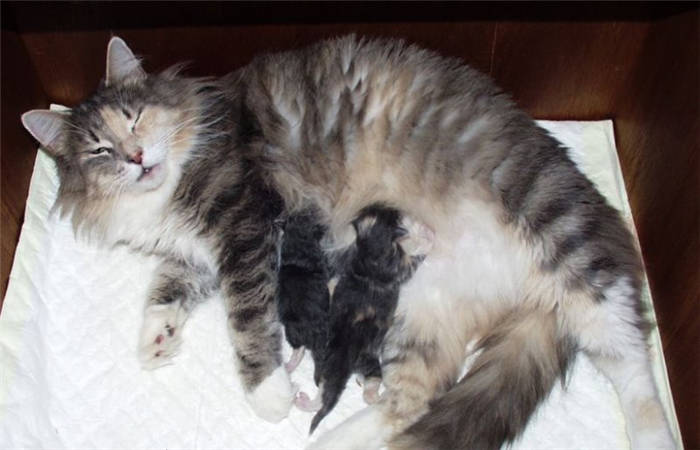
The contractions become evident after the onset of phase 2 of the first stage of labor. The peritoneum is almost constantly in tension, muscle contractions are visually visible and well palpable. At this stage the cat breathes frequently and shallowly, tries to lie on its side and lick itself. Normally, from the beginning of strong contractions to the onset of labor it will take no more than an hour.






